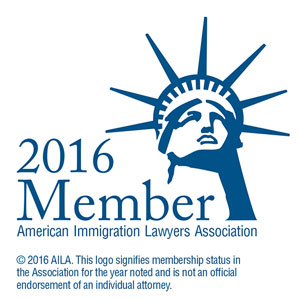On February 20, 2024, the Supreme Court heard oral argument in Corner Post, Inc. v. Board of Governors of the Federal Reserve System. This case could potentially expand the six year statute of limitations to challenge a regulation under the Administrative Procedure Act (APA). § 702 of the APA provides that “]a] person suffering legal wrong because of an agency action, or adversely affected or aggrieved by agency action” may seek judicial review. § 2401(a) of the United States Code generally requires that the complaint to commence such an action must be “filed within six-years after the right of action accrues.”
In Corner Post, the plaintiffs asserted that the six year statute of limitations under the APA first begins to accrue when the plaintiff has suffered a “legal wrong” or been “adversely affected or aggrieved” rather from when the agency issues a rule. The Board of Governors of the Federal Reserve issued Regulation II in 2011, which capped the interchange fees paid on debit-card transactions. The North Dakota Retail Association and others challenged this regulation under the APA. The Board moved to dismiss arguing that the statute of limitations had run out. They added Corner Post, which was incorporated in 2017 and began operating in 2018. The Board again moved to dismiss, and the district court granted the motion holding that the statute of limitations under Section 702 began running when Regulation II was published in 2011. The Eight Circuit affirmed rejecting the argument that the six year statute of limitations began running only when Corner Post opened in 2018. Corner Post sought review by the Supreme Court.
If plaintiffs prevail, Corner Post would open the door to many challenges to government regulations even beyond the six year date from when they were issued. Moreover, on January 17, 2024, the Supreme Court also heard oral argument on January 17, 2024 in Relentless, Inc. v. Department of Commerce and Loper Bright Enterprises v. Raimondo whether to eliminate or restrict the deference that courts give to an agency’s interpretation of an ambiguous statute under Chevron U.S.A., Inc. v. Natural Resources Defense Council, 467 U.S. 837 (1984). This is known as Chevron deference, which has insulated the government from challenges to its interpretation of a statutory provision.
One can see how the evisceration of Chevron deference in Loper Bright and Relentless, along with Corner Post relaxing the six year deadline for APA challenges, can result in challenges to immigration regulations even though they were promulgated more than six years ago. For instance, in Wash Tech v. DHS the F-1 Optional Practical Training (OPT) and STEM OPT rule promulgate in 2016 were both upheld by the First Circuit under Chevron deference. If Corner Post broadens the six year limitation to challenge a rule, and if Chevron deference is eliminated, plaintiffs who claim they were aggrieved because they may have lost their job to an F-1 nonimmigrant under the OPT rule, can again try to challenge the rule even though more than 6 years have passed.
As background, the Washington Alliance of Technology Workers (Wash Tech) challenged the Optional Practical Training (OPT) and the STEM Optional Practical Training (OPT). DHS allows eligible students in STEM fields an additional 24 month OPT extension beyond the usual 12 month OPT period. The 2016 Rule restarted the clock to challenge the statutory authority for the OPT program as a whole along with the new, STEM-specific extension.
Wash Tech argued that “the statutory definition of the F-1 visa class precludes the Secretary from exercising the time-and conditions authority to allow F-1 students to remain for school recommended practical training after they complete their coursework”. Wash Tech read INA § 101(a)(15)(F)(i) as authorizing DHS to allow F-1 students to remain in the U.S. only until they have completed their course of study, as the provision does not specifically mention post-graduation practical training. The court affirmed a district court judgment that upheld DHS’ current OPT rules. The court reasoned that the STEM OPT extension is a valid exercise of DHS’ authority under in INA § 214(a)(1) to promulgate regulations that authorize an F-1 student’s stay in the U.S. beyond graduation. The court further noted that “practical training not only enhances the educational worth of a degree program, but often is essential to students’ ability to correctly use what they have learned when they return to their home countries. That is especially so in STEM fields, where hands-on work is critical for understanding fast-moving technological and scientific developments.” Judge Pillard, who authored the opinion, noted that the concept of post-coursework practical training for foreign students predates the Immigration and Nationality Act of 1952, pointing to a 1947 rule which “allowed foreign students ‘admitted temporarily to the United States . . . for the purpose of pursuing a definite course of study’ to remain here for up to eighteen months following completion of coursework for ‘employment for practical training’ as required or recommended by their school”. Under Lorillard v. Pons, 434 U.S. 575, 580 (1978), Congress is presumed to be aware of an administrative interpretation of a statute and to adopt that interpretation when it reenacts its statutes without change. Practical training has been authorized even prior to the enactment of the INA in 1952. In previous blogs, we have discussed Congressional authority for OPT at length, see here, here, here, and here.
In addition, the court paid deference under Chevron to the agency’s interpretation of 101(a)(15)(F)(i) by asserting that “OPT’s nexus to an F-1 student’s course of study, together with the student’s application to the school for approval and the school’s reporting responsibilities to DHS, ensure that the additional time and practical training opportunities available through the program help F-1 students to cement the knowledge acquired in their coursework consistent with legal limits.”
If the Supreme Court in Loper Bright and Relentless eliminate Chevron deference, and if Corner Post broadens the six year statute of limitations, a different plaintiff can again challenge the OPT rule all over again. The rule may most likely withstand attack because it is not entirely based on Chevron deference as it was also upheld under Lorillard v. Pons. So even if Chevron deference is eliminated, under the doctrine established in Lorillard it can be presumed that Congress was aware of the government’s interpretation of F-1 status as encompassing practical training each time it has amended the INA. It can also be argued that the DC Circuit’s reliance on Chevron was either an alternate holding or dicta. The following extract from the decision indicates that the DC Circuit relied on the plain meaning of INA 214(a)(1); 8 USC 1184(a)(1) rather than paying Chevron deference to the DHS’s interpretation of those provisions:
The 2016 Rule is within DHS’s statutory authority. Section 1184(a)(1)’s time-and-conditions provision is the source of that authority, and the F-1 visa class definition guides its use. Because the 2016 Rule regulates the “time” and “conditions” of admission for F-1 visa-holders, and because it is reasonably related to the distinct composition and purpose of that visa class, as defined in the F-1 provision, the Secretary had authority to promulgate it.
50 F.4th at 177.
The most straightforward reading of the INA is that it authorizes DHS to apply to admitted F-1 students the additional “time” and “conditions” that enable them to remain here while participating in OPT recommended and overseen by their respective academic institutions. But at a minimum, even if it is ambiguous on the point, the statute may reasonably be understood as the Department has read it in support of the 2016 OPT Rule. That interpretation thus merits our deference. Chevron, U.S.A., Inc. v. Nat. Res. Def. Council, 467 U.S. 837, 104 S.Ct. 2778, 81 L.Ed.2d 694 (1984).
Id. at 192.
At oral argument in Corner Post the justices questioned what impact it may have if parties were allowed to bring facial challenges more than six years after a final agency action. Justice Jackson asked whether this could risk destabilizing industry and noted that “we have settled rules that govern all sorts of industries, the healthcare industry, the finance industry, and people have adjusted themselves around them.” It appears that the justices know that Chevron deference is on the chopping block, and perhaps there is already a draft opinion circulating among them suggesting that Chevron deference may be no more. In an exchange with counsel for Corner Post, Justice Jackson raised the potential impact of the rulings in Corner Post, Relentless, and Loper Bright. Justice Elena Kagan also raised the risk of retroactive impacts scrambling long-established law. If plaintiffs prevail in Corner Post, it would open up challenges to well settled immigration rules such as the F-1 OPT and STEM OPT rule, as well as the H-4 employment authorization rule, which can destabilize and upend the lives of real people rather than just industries.
While we have addressed how the F-1 OPT rule might be vulnerable, it may be possible for noncitizen plaintiffs to attack other rules more than six years after they were issued. For instance, 8 CFR 245.1(d)(2)(i) implements the technical exception under INA 245(c)(2), which precludes one to file an I-485 application for adjustment of status who has failed to maintain lawful status “other than through no fault of his own or for technical reasons.” 8 CFR 245.1(d)(2)(i) provides a very narrow reading of the exception under INA 245(c)(2) by only allowing one whose status was jeopardized due to inaction by the government or by an organization or individual authorized to act on behalf of he individual such as a designated student officer in a school. The Ninth Circuit in Peters v. Barr recently held that the regulation should cover situations where the applicant fell out of status due to ineffective assistance of counsel but did not invalidate the regulation. Although the rule was promulgated in 1989, Corner Post could allow one who got injured through the denial of an I-485 application to challenge the rule even today, and the elimination of Chevron deference may allow a court to hold that the regulation does not faithfully interpret the exception in INA 245(c) without regard to whether the government’s interpretation of the statute is reasonable or not. One caveat is that the plaintiff may have to get over the jurisdictional bar as set forth in Patel v. Garland when seeking judicial review of a denied I-485 application.
Corner Post along with the elimination of Chevron deference can open up other possibilities. It may be possible for a plaintiff to challenge the regulation implementing the foreign labor certification program at 20 CFR 656. Under INA §212(a)(5), an alien is deemed “inadmissible unless the Secretary of Labor” certifies, inter alia, that “there are not sufficient workers who are able, willing, qualified…and available at the time of application” among the U.S. workforce. A plain reading of INA §212(a)(5) does not in any way suggest that an employer must seek to recruit U.S. workers in order for the Secretary of Labor to certify that there is a lack of U.S. workers who are qualified and willing at the time of the application. Although the PERM rule was promulgated in 2005, Corner Post can extend the 6 year limitation if an employer was subject to injury in the last six years. Moreover, if Chevron has been eliminated a court may not give deference to the DOL’s interpretation of INA § 212(a)(5) as set forth in 20 CFR 656, which requires onerous recruitment steps including two Sunday print ads and which requires employers to justify supposedly restrictive requirements through business necessity among many other burdens that have no bearing with an employer’s real world recruitment practices.
There will be both winners and losers in a post Chevron world if the plaintiffs are victorious in Corner Post, Loper Bright and Relentless.




